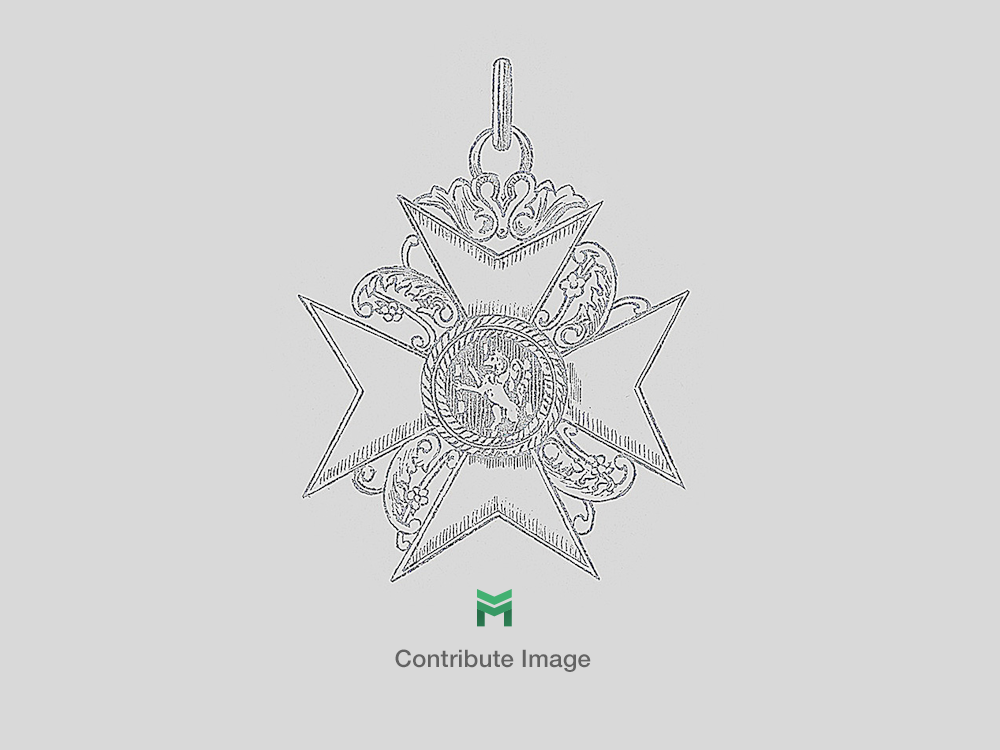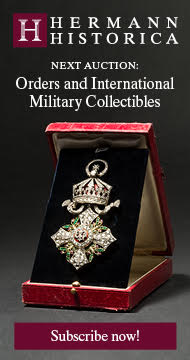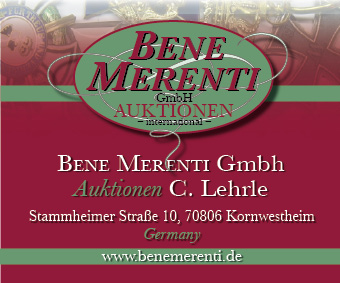German Army Recruiting Officer Ranks Cuff Patches
SKU: 20.GOR.03.02.12.02.015
Estimated market value:

Estimated market value:
Attributes
Physical Description
Branch colour: orange
History
Cuff patches were only worn with the formal dress tunic. They are rectangular and look similar to the collar patches, yet the design is slightly different.
Cuff patches have a cloth backing in branch colour. However, administrative personnel patches have their regular dark green branch colour and are additionally edged on all sides in the wearer’s secondary branch colour.
They also have one button each, which is purely decorative.
General ranks usually wore bright red patches, but other colours were possible for specialist career generals. Instead of wearing “Litzen”, which translates to cord, braid, or lace, like the lower ranks, general patches have a gold-coloured embroidery in an Arabesque design, the so-called “Larisch” embroidery. It is a similar design to the one on the general collar patches, but overall less elaborate.
Their cuff patch buttons are also gold-coloured.
Officer ranks from Leutnant to Oberst wore two cuff patches on each sleeve. Each shows one silver-coloured “Litze”.
In contrast to the ones worn by enlisted men and NCOs these “Litzen” have a separated, more pronounced “chapel”, which is the part shaped like a base of a column at each end of a “Litze”. These are also the reason why this type of “Litze” is known as “Kapellenlitze” (chapel Litze).
Officers starting from the rank of Hauptmann (Captain) and upwards in the Reichswehr Ministry, the War Ministry, the Armed Forces High Command, and the Army High Command wore carmine cuff patches embroidered with one gold-coloured “Litze” with seven “teeth”.
Officers of the General Staff wore carmine cuff patches embroidered with one silver-coloured “Litze” with seven “teeth”.
Enlisted men and NCOs wore two cuff patches on each sleeve. Each shows one silver-coloured “Litze”. They are of lower quality and less elaborate compared to those worn by officers.
In contrast to enlisted men, NCOs had special braiding in the form of fine criss-crossing lines around the edge of the sleeve. The patches themselves, however, were identical.
Branch colours on German Heer headgear was as follows:
Black was worn by Engineer units.
Black/White was worn by Panzer Engineers.
Copper Brown was worn by Motorcycle personnel.
Light Brown was worn by Signals units until 1936, and by Construction troops.
Carmine was worn by the Führer Staff, General Staff Officers, Staff Officers of the Supreme Command of the Army, and all Veterinary branches.
Bordeaux Red was worn by Smoke & Chemical personnel.
Wine Red was worn by Judicial officials.
Bright Red was worn by Generals, Artillery units, and Ordnance Officers (until 1944).
Rose or Pink was worn by all Armored units (including Panzer troops, and Schützen Brigade Staff).
Orange was worn by Recruiting personnel, Ordnance troops, Ordnance Officers (since 1944), and Field Gendarmerie units.
Bright yellow was worn by Cavalry units, and Light Division Staff.
Lemon yellow was worn by Signal units.
White was worn by Infantry units.
Light Grey was worn by Propaganda personnel.
Grey-Blue was worn by Sonderführer (Specialist Officers).
Violet was worn by Chaplains and Field Bishops.
Cornflower Blue was worn by Medical units, and Supply units.
Bright Blue was worn by Transport troops.
Bright Green was worn by Jäger and Mountain units.
Grass Green was worn by Panzer Grenadier units (Armored Infantry).
Dark Green was worn by Administrative personnel.
This list gives a broad and somewhat simplified overview, since the branch colour system got more and more complex between 1936 and 1943. Also, different shades were produced due to varying dye lots and production processes.


Comments
Sign in to comment and reply.


Scroll Top